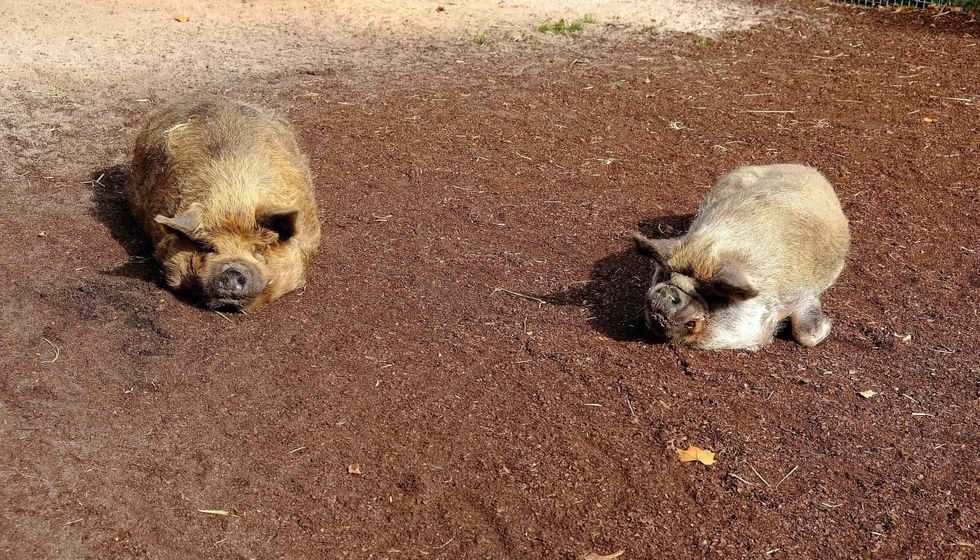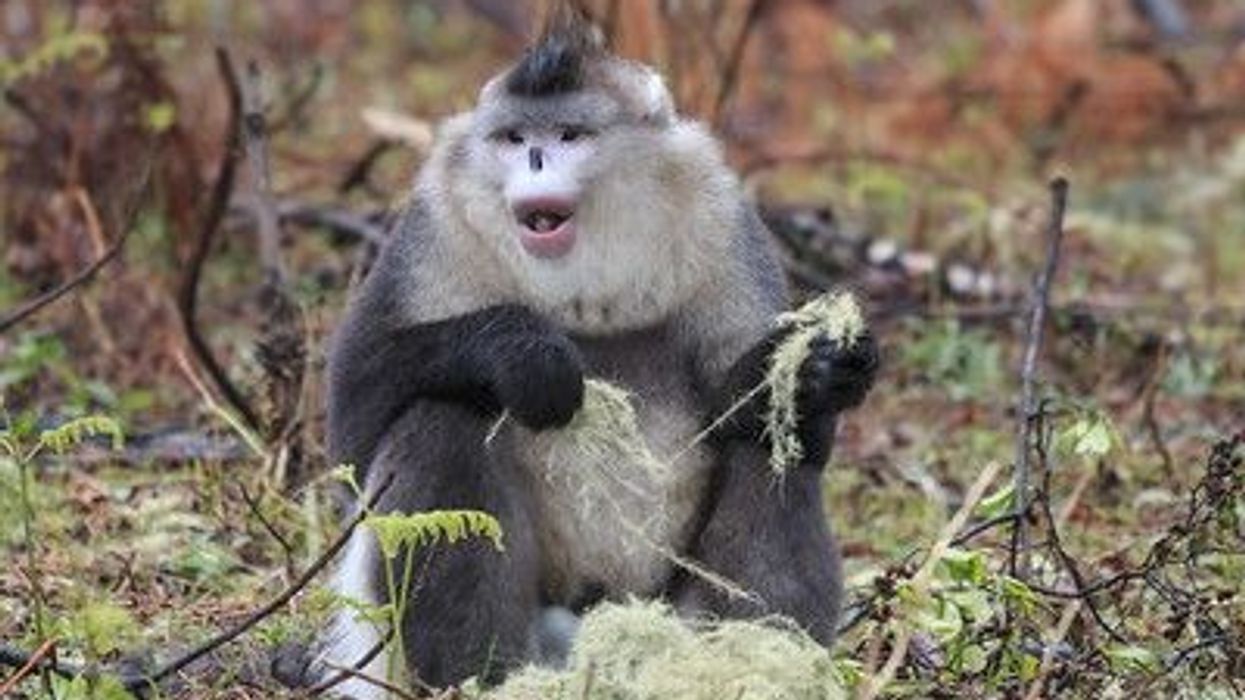Kunekune pigs originate from New Zealand and it is said that this breed has come from Asian domesticated pigs. Kunekune pigs are hairy and they are smaller compared to other domesticated pig breeds.
'Kunekune' is a Maori term that means 'fat and round', which perfectly describes the body of these pot-bellied pigs. This breed was mainly kept by Maori people but has now become a popular pet in the United States and the United Kingdom.
Kunekune pigs are also said to have a really good memory.
These pets are found in different solid and mixed colors, making them have an even cuter appearance. You can keep Kunekune pigs as pets as they are good at interacting with humans and their owners.
Read on for more Kunekune pig facts. Also, check out these articles on a domestic pig and guinea pig.
Kunekune Interesting Facts
What type of animal is a Kunekune?
The Kunekune is a breed of domesticated pigs.
What class of animal does a Kunekune belong to?
Kunekune pigs belong to the class Mammalia and the family Suidae.
How many Kunekunes are there in the world?
The British Kunekune Pig Society states that they have registered 500 Kunekune pigs. We can assume that these pigs have a larger population as they are domesticated pigs and people often keep them as pets.
As of the '80s, only 50 Kunekune pigs were left. However, its population slowly increased as they became more popular again and the breed was stopped from becoming extinct.
Where does a Kunekune live?
Kunekune pigs originated from New Zealand which is still this pig's native land. However, these pigs have also been introduced to other countries like the United States, the United Kingdom, and to other parts of the world.
These pigs are a popular choice of pet. It is said that whalers and traders were the first to introduce Kunekune pigs to New Zealand.
What is a Kunekune's habitat?
A Kunekune pig is mainly found in farmlands or pig enclosures that are made by humans. These animals cannot survive in the wild.
These pigs love grass and enjoy living in a grassy area. As grazing pigs, these animals do need a lot of area to feed. These pigs are tolerant to all kinds of temperature and climates, and they can even stand the cold thanks to to their furry coats.
Who do Kunekunes live with?
Kunekune pigs can be kept with multiple pigs from their own breed. These pigs work well with other animals and can easily get along with them.
As an owner, you will need to train the piglets to help them socialize. Pigs often are herd leaders, so proper training can help to keep the whole herd healthy. Kunekunes are great pets because of their docile nature and because they can interact with human beings.
How long does a Kunekune live?
A Kunekune pig has an average lifespan of eight to 16 years which is quite long for pigs. Make sure to take good care of its nutrition so that your pig lives for a long time.
How do they reproduce?
You will need to breed two Kunekunes so that a female pig can produce piglets. Boars, as well as sows, become sexually mature at eight months but they may wait a little longer to have babies.
It is quite rare for these pigs to breed before turning one year old. These pigs do not have any particular breeding season and sows will have multiple estrus (heat) cycles in a year. A single cycle lasts for around 22 days.
Breeding during this time will lead to a pregnancy that lasts for around 116 days. A sow gives birth to six to eight piglets but can even give birth to 12 piglets in a single season.
It takes eight to 10 weeks for piglets to wean from their mother. If you are thinking of breeding your own boar and sow, make sure to provide your sow with enough bedding to provide adequate comfort.
What is their conservation status?
Kunekune pigs are yet to be listed in any conservation lists. On the IUCN, their status is Not Evaluated.
Kunekune Fun Facts
What do Kunekunes look like?
Kunekunes are known for their iconic pot-bellied and rounded look. Even though it has a smaller height than other pigs, the weight of these animals make them look bigger.
Apart from its round belly, this pig has stubby legs and an extremely cute short snout. A Kunekune pig is also known for the wattles or tassels that hang from its chin that give this pig a distinct look from other domesticated pig breeds. However, these wattles might not be seen in all individuals.
Boars grow tusks when they are sexually mature. Their ears stand tall and these pigs also have a small, almost hairless tail.
An interesting Kunekune pig fact is that these pigs have a hairy fur covering. It helps to keep these pigs warm in cold temperatures. The coat can vary from being short to extremely hairy.
A Kunekune pig can be found in a number of colors, including solid variants like brown, black, white, tan, and gold. Mixed colors are also available. However, make sure that a piglet is from a purebred Kunekune pig before adopting one.

How cute are they?
Kunekune pigs are extremely cute and they are one of the smaller pig breeds. A pig can grow to be quite heavy which gives it a round pot-bellied look.
How do they communicate?
Kunekunes are one of the most intelligent breeds of domesticated pig breeds and they can easily learn tricks through proper training. Pigs are known for using a number of communication techniques including vocalization and communication through pheromones.
How big is a Kunekune?
The average length of a Kunekune pig is up to 4 ft (121 cm), while the average height is around 1.9 ft (60 cm). These pigs are definitely smaller than other domesticated pig breeds.
Boars are usually bigger than sows. Kunekune pigs are around two times shorter than red wattle hogs that grow to an average length of 8 ft (240 cm) and to an average height of 4 ft (120 cm).
How fast can a Kunekune run?
All we can say is that this pot-bellied is not very good at running and it grows quite fast which restricts its movement even further.
How much does a Kunekune weigh?
The average weight of a Kunekune pig is around 130-220 lb (60-100 kg). The pig gets its name from its tendency to be fat and round.
What are their male and female names of the species?
Male Kunekune pigs are known as 'boars' and female Kunekune pigs are known as 'sows'.
What would you call a baby Kunekune?
A baby Kunekune pig is known as a 'piglet'.
What do they eat?
The primary food of a Kunekune pig is grass. As these pigs love to graze, they should have access to plenty of grass. In drier conditions, hay should be available instead.
Grass pellets can also be fed to this pig. This breed can go through 1 lb (0.45 kg) of pig nut feed in a single day.
A Kunekune pig has the tendency to grow fast, so owners should keep an eye on its diet. Even though this pig can sustain an all-grass diet, you can also give them vegetables. It is best to feed them fresh vegetables rather than giving these pigs any cooked produce.
Are they dangerous?
Not at all! Kunekune pigs are one of the friendliest pigs that you will meet and are not aggressive. However, do not irritate them as they can accidentally hurt you with their tusks. Moreover, a Kunekune pig is extremely affectionate to humans and loves to be petted.
Would they make a good pet?
Yes, Kunekunes are really good pets because of their calm and affectionate nature. No one needs to worry about feeding them and these pigs are quite happy living in a cozy environment.
Did you know...
The word 'kunekune' is pronounced as 'cooney cooney'.
The unique tassels that Kunekune pigs may have are also known as 'piri piri'.
The British Kunekune Pig Society and the American Kunekune Pig Society take care of recording the population of this pig.
Kunekune pigs are mainly used as companion pigs. It is rare to find humans eating Kunekune pigs, but some have eaten the pork from this breed.
How to look after Kunekune pigs?
The cost of buying Kunekune pigs in the United States is around $800 to $1,600. Keeping these pigs is fairly easy as they mostly eat grass, but it is important to create a proper enclosure in order to keep away any predators.
These pigs love to sleep, so they should have proper bedding which is usually made out of hay.
This breed prefers to sleep in the open but there needs to be a tented area for winter and for the rainy season. Also, as they are companion pigs, it is best to keep two Kunekune pigs rather than one alone.
How often do Kunekune pigs breed?
Like other pigs, Kunekune pigs do not have a specific breeding season and they breed when a sow comes in heat. A sow is polyestrous in nature and can have two or more cycles in a year.
Here at Kidadl, we have carefully created lots of interesting family-friendly animal facts for everyone to discover! Learn more about some other mammals including water buffalo, or wild boar.
You can even occupy yourself at home by drawing one on our pig face coloring pages.









